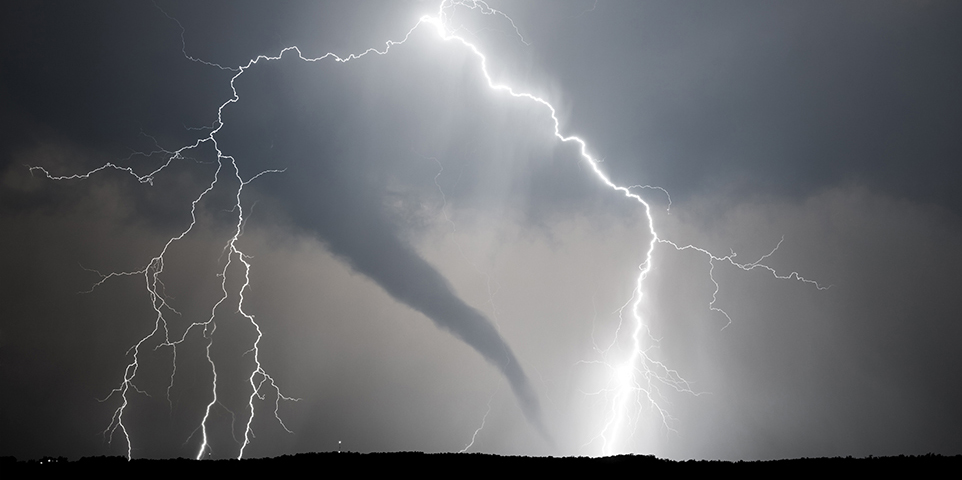MEMBERSHIP
AMPLIFY
EN ESPAÑOL
Connect With Us
- Popular search terms
- Automobile
- Home + Renters
- Claims
- Fraud
- Hurricane
- Popular Topics
- Automobile
- Home + Renters
- The Basics
- Disaster + Preparation
- Life Insurance

Convective storms result from warm, moist air rising from the earth, and depending on atmospheric conditions, may develop into tornadoes, hail, thunderstorms with lightning, or straight-line winds. Convective storms are the most common and damaging natural catastrophes in the United States, according to Triple-I’s May 2020 white paper, Severe convective storms: Evolving risks call for innovation to reduce costs, drive resilience.
A tornado is a violently rotating column of air that extends from a thunderstorm and comes into contact with the ground, according to the National Oceanic and Atmospheric Administration (NOAA). In an average year, about 1,000 tornadoes are reported nationwide, according to NOAA. Tornado intensity is measured by the enhanced Fujita (EF) scale. The scale rates tornadoes on a scale of 0 through 5, based on the amount and type of wind damage. It incorporates 28 different damage indicators, based on damage to a wide variety of structures ranging from trees to shopping malls.
|
(1) Original scale: wind speeds represent fastest estimated speeds over one quarter of a mile.
(2) Enhanced scale: wind speeds represent maximum 3-second gusts.
Source: U.S. Department of Commerce, National Oceanic and Atmospheric Administration.
($ millions)
|
||||||||||||||||||||||||||||||||||||||||||||||||||||||||||||||||||||||||
(1) Defined by Aon as severe convective storms including insured thunderstorm events and may include tornado, hail, damaging straight-line winds (derechos) and flash flood impacts from events. Subject to change as loss estimates are further developed. As of January 2025.
(2) Adjusted for inflation by Aon using the U.S. Consumer Price Index.
Source: Aon.
|
(1) Numbers include preliminary estimates as of January 2025.
(2) Excludes Puerto Rico. Tornadoes that cross state lines are counted in every state in which they touch down.
Source: U.S. Department of Commerce, Storm Prediction Center, National Weather Service.
|
(1) Numbers include preliminary estimates as of January 2025. Ranked by total number of tornadoes.
(2) States with the same number of tornadoes receive the same ranking.
(3) State had no tornadoes in 2024.
(4) The U.S. total will not match data used in other charts because it counts tornadoes that cross state lines.
Source: U.S. Department of Commerce, Storm Prediction Center, National Weather Service.
|
(1) Numbers include actuals through November and preliminary estimates for December as of February 2025. Excludes Puerto Rico. Tornadoes that cross state lines are counted as a single event in this chart.
Source: U.S. Department of Commerce, Storm Prediction Center, National Weather Service.
Source: U.S. Department of Commerce, National Oceanic and Atmospheric Administration, National Weather Service.